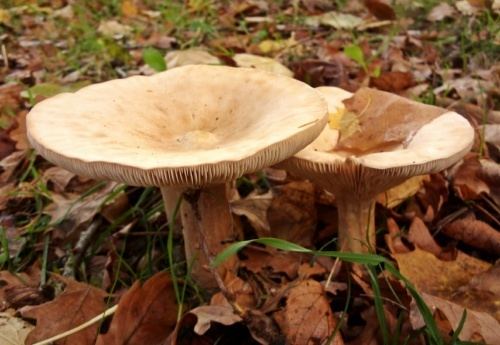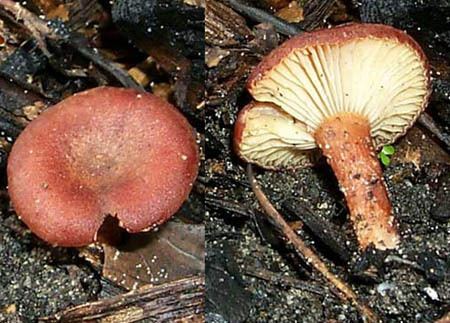Higher classification Agaricales Class Agaricomycetes | Division Basidiomycota Scientific name Tricholomataceae Rank Family | |
 | ||
Lower classifications Tricholoma, Clitocybe, Lepista, Matsutake, Tricholoma equestre | ||
Tricholomataceae fungi kingdom
The Tricholomataceae are a large family of mushrooms within the Agaricales. A classic "wastebasket taxon", the family is inclusive of any white-, yellow-, or pink-spored genera in the Agaricales not already classified as belonging to e.g. the Amanitaceae, Lepiotaceae, Hygrophoraceae, Pluteaceae, or Entolomataceae.

The name derives from the Greek trichos (τριχος) meaning hair and loma (λωμα) meaning fringe or border, although not all members display this feature.

Arnolds (1986) and Bas (1990) also place the genera of the Hygrophoraceae within this family, but this classification is not accepted by the majority of fungal taxonomists.
Molecular phylogenetic analysis has greatly aided in the demarcation of clear monophyletic groups among the Tricholomataceae. So far, most of these groups have been defined cladistically rather than being defined as formal Linnean taxa, though there have been several cases in which older proposed segregates from the Tricholomataceae have been validated by evidence coming from molecular phylogenetics. As of 2006, validly published families segregated from the Tricholomataceae include the Hydnangiaceae, Lyophyllaceae, Marasmiaceae, Mycenaceae, Omphalotaceae, Physalacriaceae, and Pleurotaceae.
In 2014 a study recovers seven monophyletic genera within the Tricholomataceae; Leucopaxillus, Tricholoma, Pseudotricholoma stat. nov, Porpoloma s.str, Dennisiomyces, Corneriella gen.nov. and Albomagister gen. nov. The aim of the study was to delimit the highly polyphyletic Tricholomataceae, and identyfiy monophyletic groups within the Tricholomatoid clade, which includes the families Tricholimoaceae, Entolomataceae, and Lyophyllaceae. According to this study there have been several different ways of distributing Porploma, which is highly polyphyletic. This study suggests that the genus Porplona is distributed in four groups within the Trichlomatatic clade; Poroploma s.str, Corneriella gen.nov. and Pseudotricholoma stat. nov. and Pogonoloma.
The name "Tricholomataceae" is nevertheless seen as having validity in describing Tricholoma and its close relatives, and whatever other genera can at some future point be described as part of a monophyletic family including Tricholoma. To that end, the International Botanical Congress has voted on two occasions (1988 and 2006) to conserve the name "Tricholomataceae" against competing names. This decision does not invalidate the use of segregate families from the Tricholomataceae, but simply validates the continued use of Tricholomataceae.
The extinct genus Archaeomarasmius, described from Turonian-age New Jersey amber, is one of four known genera of Agaricales in the fossil record.
